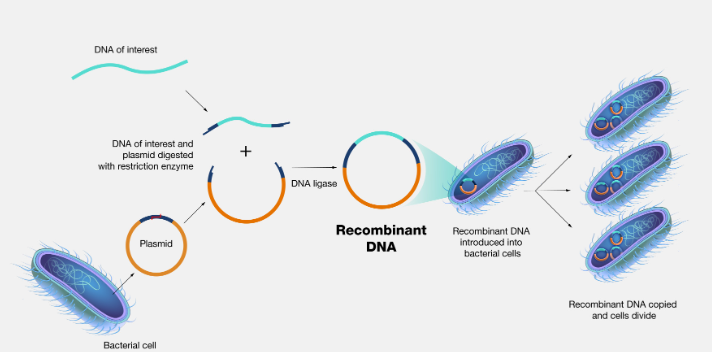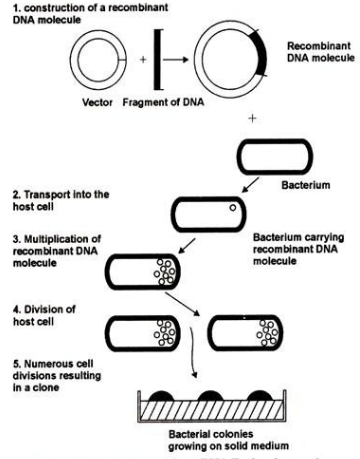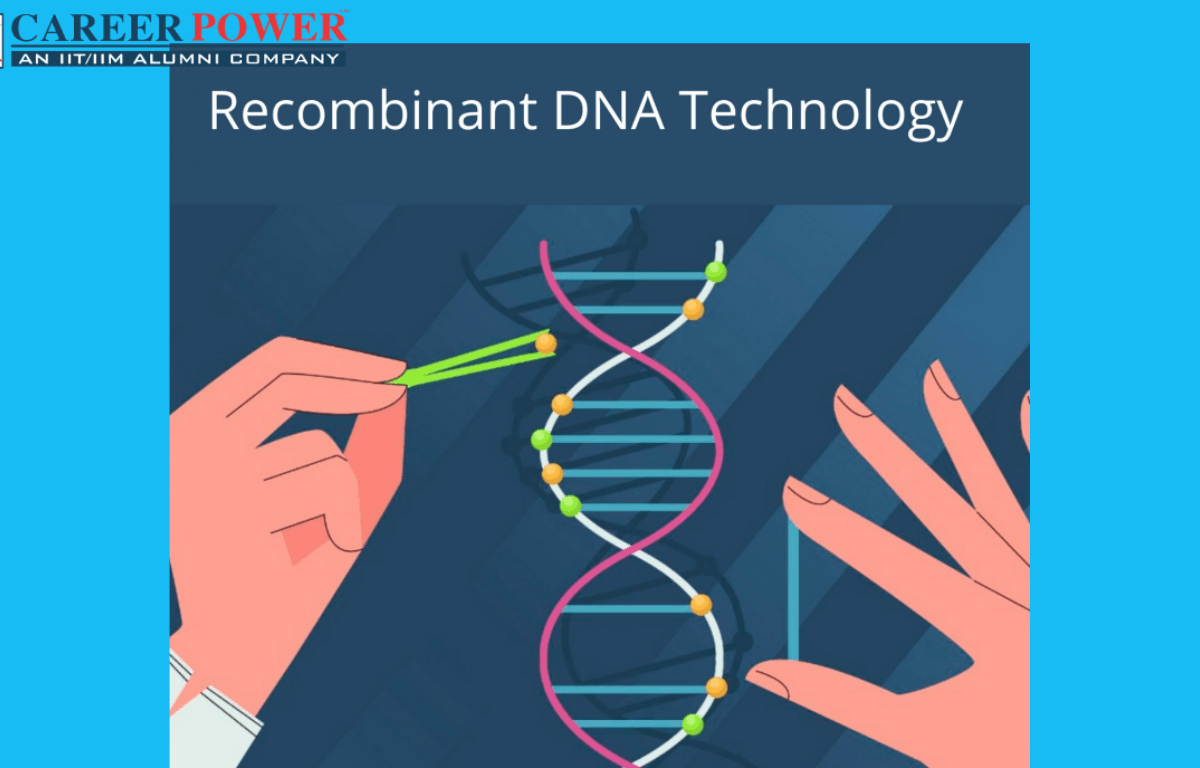Recombinant DNA technology is the exchange of genetic material with one another of the same species with the aid of vectors so that the phenotype of the host gets altered. This technology was first invented and developed by Boyer and Cohen in the year 1973. The process of recombinant DNA Technology or rDNA Technology is also known as genetic engineering in Biotechnology. Thus basically the introduction of foreign DNA into the genome of an organism that contains the gene of our interest. The newly introduced gene is called recombinant gene and the process is called recombinant DNA technology. In this article, we have provided highlights on fundamental principles, the steps and processes involved in rDNA technology.
Recombinant DNA Technology – Definition

Recombinant DNA Technology or rDNA Technology is a technique used for producing artificial DNA through the combination of different genetic materials from different sources. The resultant altered DNA is recombinant DNA and technology is recombinant DNA technology. With the discovery of restriction enzymes also known as molecular scissors, the process of rDNA technology came into existence. The process is implemented with the aid of certain tools of Biotechnology which are discussed further.
Tools of rDNA Technology
Recombinant DNA Technology is the advancement in genetic engineering that can be implemented and accomplished with the help of significant tools of biotechnology that were discovered way back. Such tools play an important role in producing the recombinant genome, that contains our genes of interest to be inserted into the host cells. The tools are as follows:
- Restriction Enzymes – These are otherwise known as Molecular scissors that aid in cutting DNA at specific locations. Endonucleases cut the DNA strands within to aid them in binding with vector or cloning vehicles.
- Plasmid or Cloning Vectors – The plasmids are also known as cloning vectors that act as a vehicle to carry and transfer the desired gene into host cells. They are self-replicating and have restriction sites for the action of endonuclease enzymes to act on it.
- DNA Polymerase – This enzyme is required for synthesizing of multiple DNA strands and to carry out the PCR (Polymerase Chain Reaction)
- Foreign DNA or synthetic DNA or DNA Insert – This is the gene of interest to be ligated with plamid molecule and inserted into the host.
- Host cells – These are the target organisms in which the genome is inserted to express the phenotype
- Culture media – This is the medium that contains essential growth factors, vitamins and soluble chemical compounds that support the growth and multiplication of the host cells with inserted rDNA.
Steps Involved in Recombinant DNA Technology
The basic steps involved in the process of Recombinant DNA Technology are described in the flowchart below for easier understanding. The process is described in detail further.
Isolation of Genetic Material
↓
Cutting of genes at the recognition sites
↓
Gene amplification through process of PCR (Polymerase Chain Reaction)
↓
DNA Ligation with the aid of enzyme DNA Ligase
↓
Insertion of DNA into the host cells

Process of rDNA technology
The step-by-step process involved in the Recombinant DNA Technology is explained in detail under each step. The initial step starts with the isolation of desired genes to the final step of preparing the host with inserted genome with the gene of interest. The rDNA process is carried out with utmost safety as prescribed by FDA and other regulatory institutions. The steps involved are:
Step-1 Genetic Material Isolation
This is the initial step in Recombinant DNA technology which involves isolation of desired DNA in its pure form which is free from other macromolecules. This is also termed as a “gene of interest” which is targetted to be inserted into host cells for phenotypic expression.
Step-2.Cutting the DNA at Specific Recognition sites
The restriction enzymes, which are endonucleases play a major role in finding a specific site at which the desired gene is inserted into the vector genome. Plasmids are cloning vectors that act as a vehicle in carrying the gene of interest to the host cells. This is known as ‘restriction enzyme digestions’.
Step-3. Amplifying the gene copies through Polymerase chain reaction (PCR)
Polymerase Chain Reaction is a process in which the amplification of a single copy of DNA occurs into thousands to millions of copies. The PCR is carried out after the gene of interest has been cut using restriction endonucleases.
Step-4 Ligation of DNA Molecules
Ligation is the process of joining the cut fragment of DNA into the plasmid vector using the enzyme called DNA Ligase. The resulting DNA molecule is the combination of interest molecule and vector molecule, which is known as rDNA or Recombinant DNA molecule.
Step-5. Insertion of Recombinant DNA Into Host
This is the last step in which the recombinant hybrid DNA is inserted into a recipient host cell. This step is termed Transformation. Once the recombinant DNA is inserted into the host cell, it gets multiplied in the culture media and is expressed in the form of the manufactured protein under optimal conditions.
Applications of Recombinant DNA Technology
The technique of producing rDNA or Recombinant DNA is now widely applicable in various fields such as medical science, industries, animal husbandry, and agriculture.
- The major and most important application of rDNA technology is in the field of medicine. It is used for the production of Insulin.
- It is used to detect the most dreadful disease, HIV in a person.
- It is used in the treatment of genetic diseases or gene defects that can give rise to some hereditary diseases. This process is called gene therapy.
- It is also used in clinical diagnosis procedures, of which ELISA is an example.
- Recombinant DNA Technology is widely applicable in the field of agriculture for the production of GM crops which are Genetically Modified Hybrid crops that yield Flavr Savr tomatoes, golden rice rich in proteins, and Bt-cotton to protect the plant against worms and lot more.
Also Read: DNA Structure, Functions, Types, and Its Discovery
Also Read: Difference Between DNA and RNA
Also Read: Difference Between Prokaryotic Cell and Eukaryotic Cell



 50 Vegetables Name for Kids in English a...
50 Vegetables Name for Kids in English a...
 Food Chain: Definition, Types, Examples,...
Food Chain: Definition, Types, Examples,...
 Human Respiratory System: Definition, Di...
Human Respiratory System: Definition, Di...













